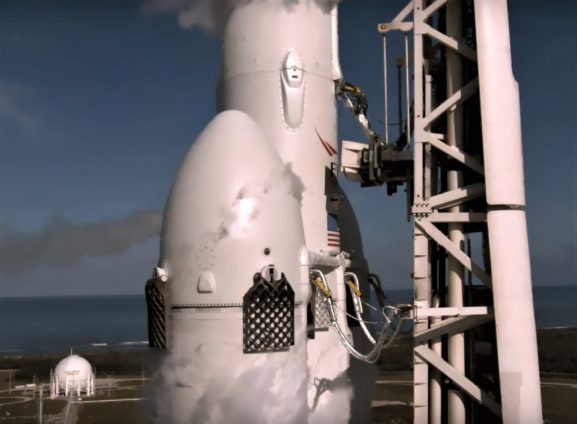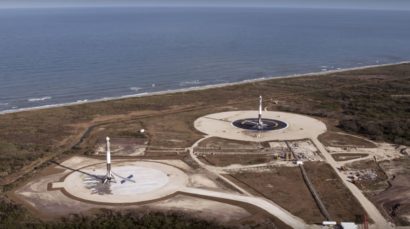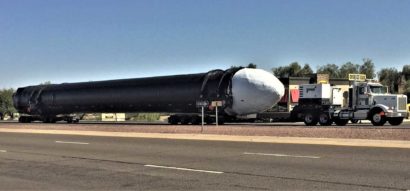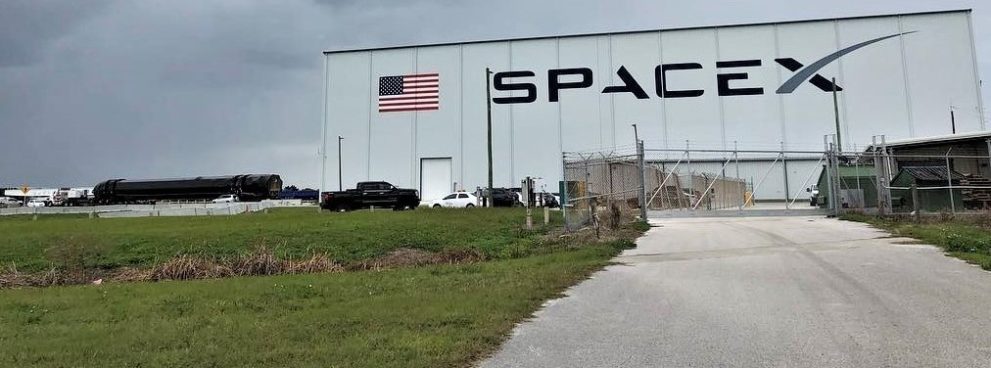
Taiwan’s National Space Organization (NSO) has reaffirmed a Q2 2019 launch target for SpaceX’s third-ever Falcon Heavy mission, a US Air Force-sponsored test launch opportunity known as Space Test Program 2 (STP-2).
Set to host approximately two dozen customer spacecraft, one of the largest and most monetarily significant copassengers riding on STP-2 is Formosat-7, a six-satellite Earth sensing constellation built with the cooperation of Taiwan’s NSO and the United States’ NOAA (National Oceanic and Atmospheric Administration) for around $105M. If successfully launched, Formosat-7 will dramatically expand Taiwan’s domestic Earth observation and weather forecasting capabilities, important for a nation at high risk of typhoons and flooding rains.
Formosat-7, the latest generation of the series, is jointly developed by #Taiwan’s National Space Organization and the #US National Oceanic and Atmospheric Administration following an agreement signed in 2010. https://t.co/7hj2ijFutZ
— Asia Times (@asiatimesonline) January 7, 2019
Although Taiwan officials were unable to offer a target more specific than Q2 2019 (April to June), it’s understood by way of NASA comments and sources inside SpaceX that STP-2’s tentative launch target currently stands in April. For a number of reasons, chances are high that that ambitious launch target will slip into May or June. Notably, the simple fact that Falcon Heavy’s next two launches (Arabsat 6A and STP-2) are scheduled within just a few months of each other almost singlehandedly wipes out any possibility that both Heavy launches will feature all-new side and center boosters, strongly implying that whichever mission flies second will be launching on three flight-proven boosters.

To further ramp up the difficulty (and improbability), those three flight-proven Block 5 boosters would have to launch as an integrated Falcon Heavy, safely land (two by landing zone, one by drone ship), be transported to SpaceX facilities, and finally be refurbished and reintegrated for their second launch in no more than 30 to 120 days from start to finish. SpaceX’s record for Falcon 9 booster turnaround (the time between two launches) currently stands at 72 days for Block 4 hardware and 74 days for Block 5, meaning that the company could effectively need to simultaneously break its booster turnaround record three times in order to preserve a number of possible launch dates for both missions.
Look who was waving at passing planes over McGregor today!
A Falcon Heavy side booster on the McGregor test stand for a static fire test. pic.twitter.com/S7af6b0gHk
— Chris B – NSF (@NASASpaceflight) November 18, 2018
If it turns out the USAF is actually unwilling to fly its first Falcon Heavy mission on all flight-proven boosters (a strong possibility) or that that has never been the plan, STP-2’s claimed Q2 2019 target would likely have to slip several months into 2019. This would afford SpaceX more time and resources to build an extra three new Falcon Heavy boosters (two sides, one center), each of which requires a bare minimum of several weeks of dedicated production time and months of lead time (at least for the center core), all while preventing or significantly slowing the completed production of other new Falcon boosters.
The exact state of SpaceX’s Falcon 9 and Heavy production is currently unknown, with indications that the company might be building or have already finished core number B1055 or higher, but it’s safe to say that there is not exactly a lot of slack in the production lines in the first half of 2019. Most important, SpaceX likely needs to begin production of the human-rated Falcon 9 boosters that will ultimately launch the company’s first two crewed Crew Dragons as early as June and August, respectively.
If the first Falcon 9 set to launch an uncrewed Crew Dragon (B1051) is anything to go off of, each human-rated Falcon 9 is put through an exceptionally time-consuming and strenuous range of tests to satisfy NASA’s requirements, requiring a considerable amount of extra resources (infrastructure, staff, time) to be produced and readied for launch. B1051 likely spent 3+ months in McGregor, Texas performing checks and one or several static fire tests, whereas a more normal Falcon booster typically spends no more than 3-6 weeks at SpaceX’s test facilities before shipping to its launch pad.
Ultimately, time will tell which hurdles the company’s executives (and hopefully engineers) have selected for its next two Falcon Heavy launches: an extraordinary feat of Falcon reusability or a Tesla-reminiscent period of Falcon production hell?
For prompt updates, on-the-ground perspectives, and unique glimpses of SpaceX’s rocket recovery fleet check out our brand new LaunchPad and LandingZone newsletters!








